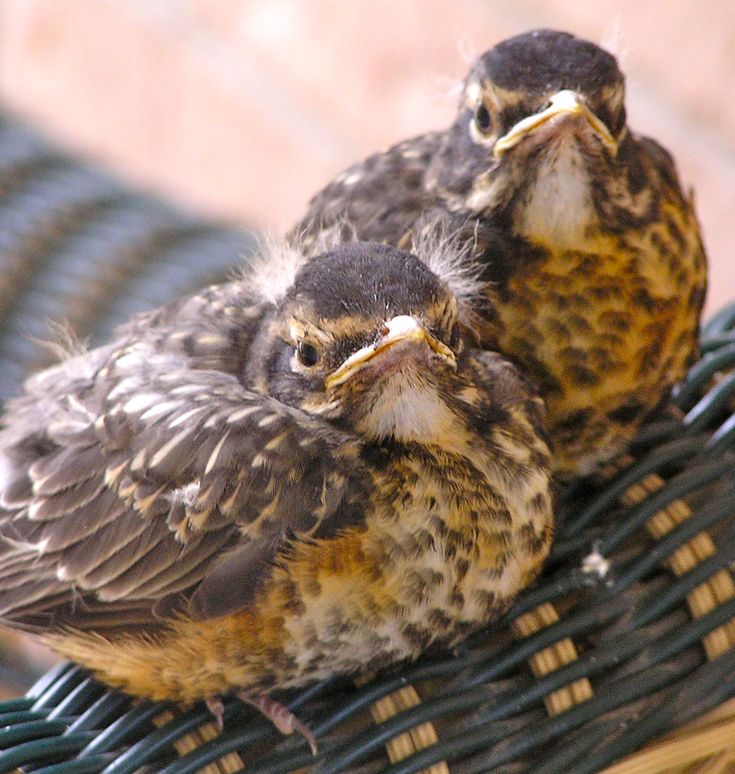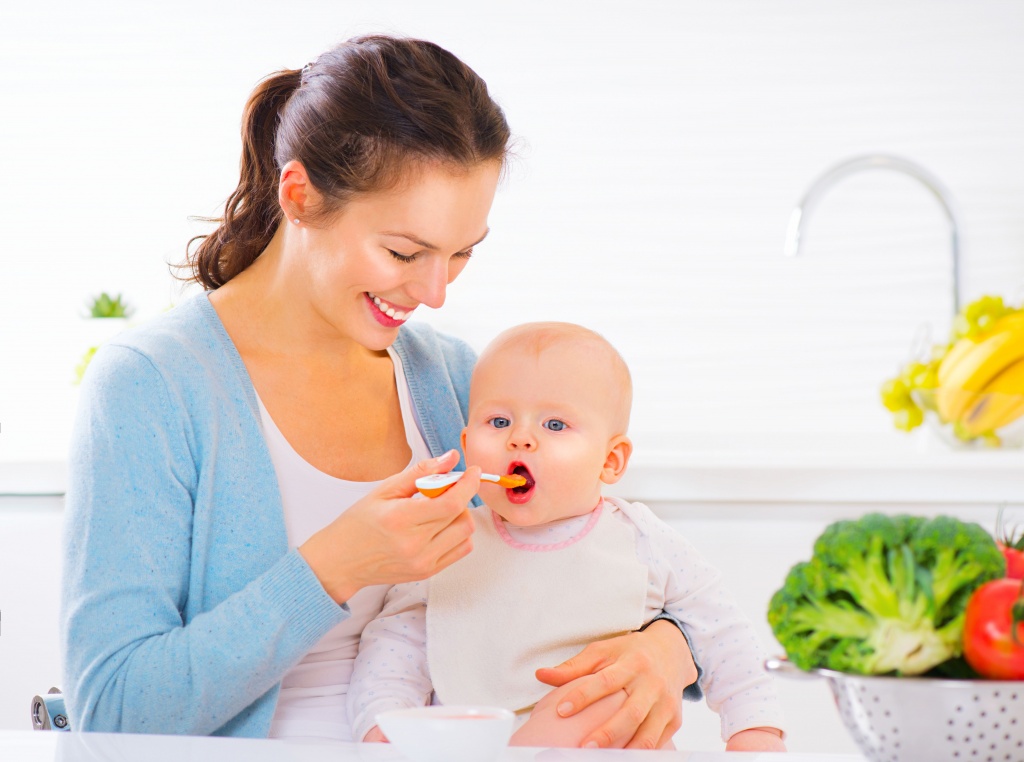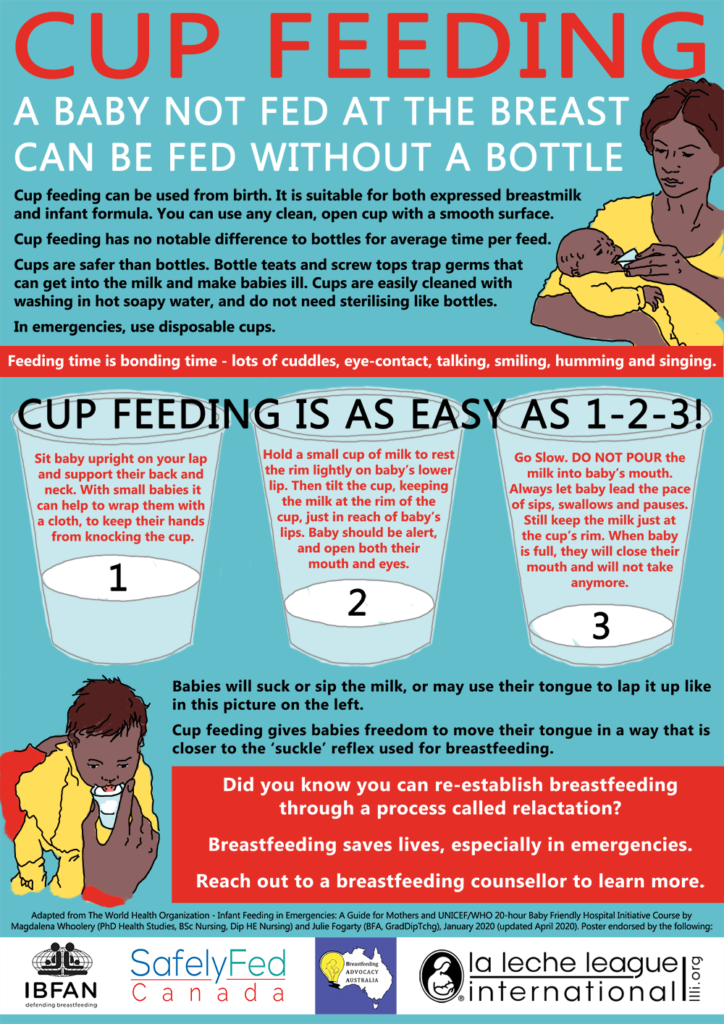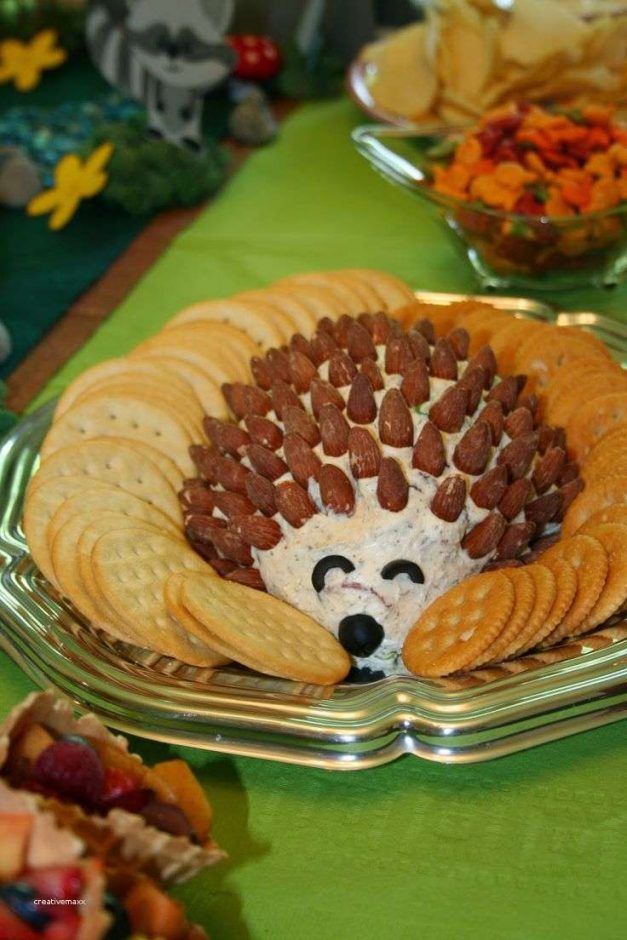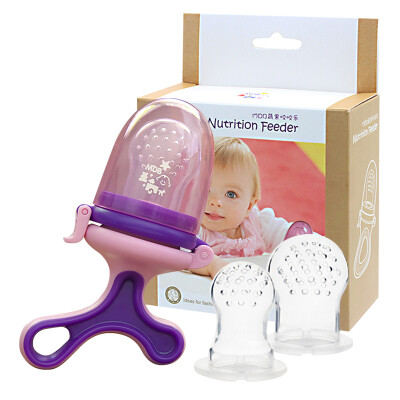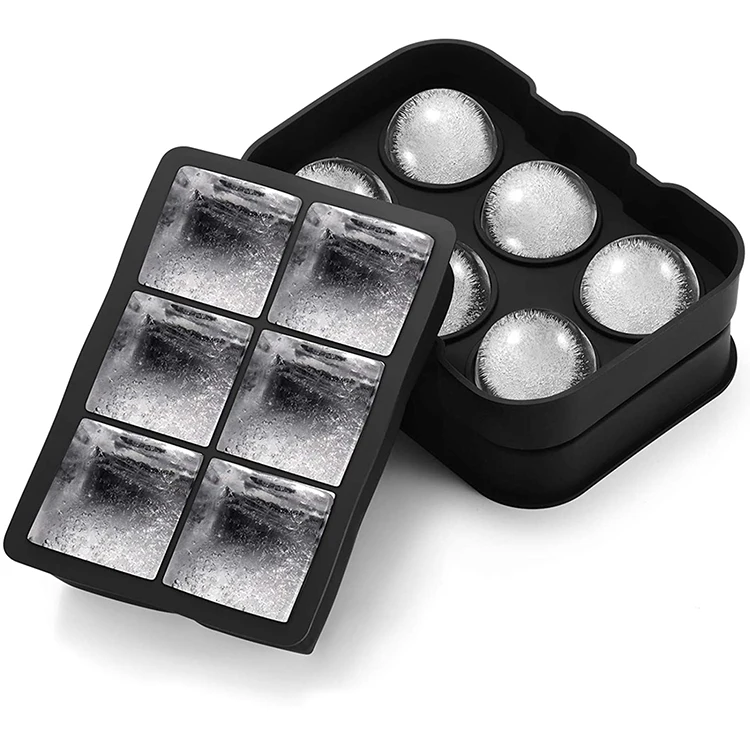Feeding orphaned baby robins
What Do Baby Robins Eat? and How to Feed One! a How-To Guide
Either you found a baby robin that’s fallen from its nest, or perhaps you’re just curious and asking what do baby robins eat?
Well, here’s the guide on what baby robins eat, and if the need arises then how to feed one. So first let’s give you the quick answers, then we’ll get into more details…
How do baby robins eat? During the first week, the parents regurgitate partly digested food into the baby’s mouth. As they grow they eat a variety of food from earthworms, to whole worms and large insects, and even berries until they fledge to finally fend for themselves.
How do you feed a baby Robin? To feed a baby robin you can use a dropper, clean hands, or let the babies feed themselves when they become independent enough. Once released they will naturally be able to hunt for food and feed themselves.
Ranger Planet
Please enable JavaScript
Ranger Planet
Read on, or watch the video below from the Ranger Planet Youtube Channel.
What do baby robins eat and when
Baby robins are just that – babies, at first, and depend wholly on their parents for food.
However, what baby robins eat during the very first few days and onward changes as time goes by – and fairly quickly too.
Here’s the list of what baby robins eat at each growth stage. But if you’re looking to protect your baby robin, then be sure to check what eats robins to know what might want to prey on them. You might also be interested to know if it’s legal to keep a robin as a pet?
1 – 7 Days – baby robins eat…
When baby robins are with their parents, the parent robins forage for food for themselves, but also gather enough to feed their young.
The parent regurgitates this partly digested food into the baby’s mouth. This is the only way that baby robins eat and are fed during the first week from birth.
This includes partly digested insects, beetles, worms, berries, and seeds
7-14 days – baby robins eat…
Around this time, the parents pass larger portions of food or break up larger ones such as earthworms and deliver into the baby robin’s mouth.
From here onwards the baby robins start eating more with each passing day.
Whole versions of insects, beetles, worms, berries and seeds.
After a period of this, the parents begin to let the baby robins eat the whole worm and other large insects on their own.
By this time a baby robin will be able to eat the equivalent of 14 feet of earthworms during its two-week nest life.
14 days plus – baby robins eat…
From this point, more often than not baby robins are able to eat food provided to them by the parents that are just placed in the nest. The baby robin is old enough to find and eat the food themselves within the nest.
In general, baby robins depend on the parents fully for their daily dose of food, until they are independent enough and can fledge the nest and fly away.
On average, the parent robins can make up to 100 visits a day to feed their young ones – that just shows how often the baby robins eat to grow up.
This is also why robins are very picky in choosing a territory to create their nest. They need to ensure they live close to adequate food sources to make the hunt for food and feeding visits often and easy.chicks in a nest
They need to ensure they live close to adequate food sources to make the hunt for food and feeding visits often and easy.chicks in a nest
You might also like:
Do robins make good pets
Why do robins hop
Do birds have ears
Do birds have teeth
So let’s move on to how you would feed a baby robin.
How to feed a baby robin?
If you’re in the situation where you have a baby robin you need to take care of and hand rear, perhaps one that fell from the nest or lost its parents. Then naturally, there are plenty of things you will have to know about feeding baby robins – let us give you some guidance.
There are, thankfully, many ways and methods that have worked to feed baby robins, below are three safe methods to feed a baby robin.
1. Using a syringe to feed a baby robin
You can use a syringe, like this one, or an eyedropper to feed baby robins. For this method, the best food would be to get a baby bird formula mix.
For this method, the best food would be to get a baby bird formula mix.
With this formula, use the syringe and simply follow the instructions for feeding.
Alternatives to baby bird formula
Instead of a bird formula mix, you could even use baby formula or wheat cereal like farina. Or at a push, you might be able to soak dried dog food which has been known to feed baby robins quite well.
However, when feeding these products be sure to still use the syringe or dropper. Try to make sure the products are mushed down enough to pass through the dropper without getting blocked.
At first, one or two full droppers will almost certainly fill the baby robin, but as they grow they’ll likely need more of it – and potentially more often. Being a robin parent is a demanding job!
The baby robin will let you know when it’s full, usually when it’s hungry or wants more food it opens its mouth automatically.
Be aware of this too, do not try to feed the robin when it is not asking, as you can easily overfeed them, which is just as risky as not feeding them.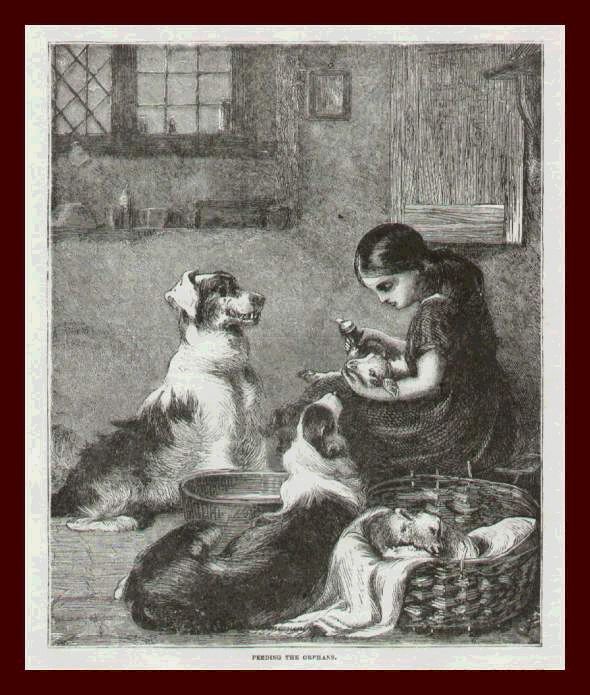
So it’s important to observe if the bird is full or not before trying to encourage them to eat further.
2. Using your hands to feed a baby robin
Hands can also be used to feed baby robins. Moistened duck or chicken feed that are processed well with an even texture can also make some good reasonable food baby robin food.
When using the hands it’s important to be hygienic. Not only when feeding but also while making the food using the hands or when handling the bird.
To feed a baby robin using your hands, take a tiny pinch of food and stick it to the tip of the finger and all you have to do is touch the corner of the bird’s mouth.
The baby robins will automatically open their mouth and you shouldn’t have any trouble passing it into their beaks.
Another great thing about using hands to feed baby robins is that you will get a good sense of when to stop because the baby robin will stop opening their mouth when they feel full, unlike droppers which can be inserted into the mouth anyway – even if the bird is already full.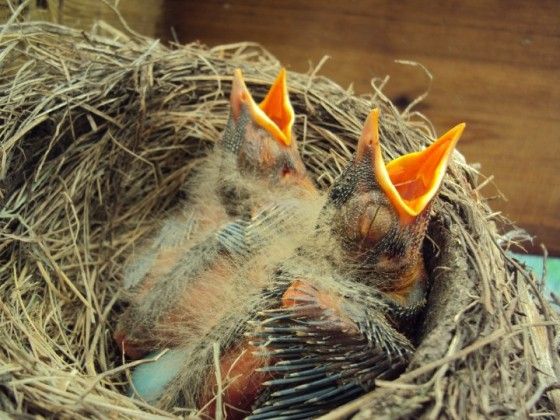
3. Allow the baby robin to feed on its own
If you get to this point then congratulations, or if the bird already has some plumage and appears to be an older chick.
This method works mostly when the baby robin is a little more grown-up and can handle the food on their own.
This is a method that allows the baby robins to feed themselves by placing the food on the ground next to them.
For this, offering small berries, or using mealworms, earthworms, or grubs near the ground next to where they rest will work fine.
This will also allow the birds to come and feed whenever they feel hungry. On average baby, robins may have to be fed every 5-10 minutes at peak times.
When feeding baby robins, make sure that…
- The food is at room temperature. Even if the food is refrigerated, it’s important to make sure the food is at room temperature when feeding the baby robins.
- Make sure the food is not spoilt, has no fungus or bacteria when feeding.
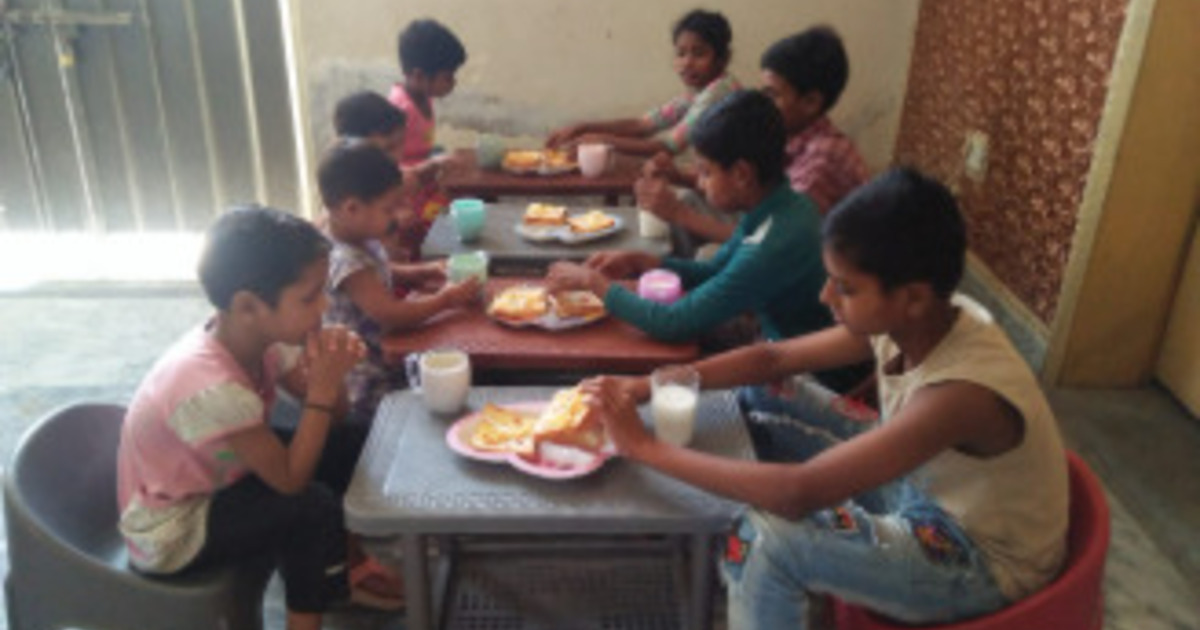
- The food should have a fine texture and even toward slushy, but smooth enough to get through the delicate throats of baby robins.
- Up to three weeks old, the baby robins will be grown up enough to find their food. So by this time, it’s good to allow the baby robins to eat of its own accord and just make sure food is available.
Then one day, they will fledge and fly away. And you can smile in the knowledge you probably just saved a wild bird’s life. If the baby robin does not survive, then it was never meant to be, and at least you provided it with some comfort and the best chance of survival.
So finally…
We hope this has been useful in answering the question – what do baby robins eat? And hope you’ve been able to put the help on how to feed one to good use.
Tweet
What Do Baby Robins Eat? How to Take Care of a Baby Robin
What’s This Post About?
Robins are pretty songbirds that belong to the Turdidae family. There are two types of species in this family: American Robin and European Robin. They can be differentiated by appearance, region, and plumage. Read on to find out more about them.
There are two types of species in this family: American Robin and European Robin. They can be differentiated by appearance, region, and plumage. Read on to find out more about them.
This post consists of an overview of what do baby robins eat. You can easily come across a baby by making sure there are robins in your backyard.
Attract these birds to your yard via bird feeders containing their favorite food sources. Robin babies can take up to one whole day to hatch properly from the eggshell.
Robin nestlings consume earthworms to survive. They prefer eating insects like mealworms, grubs, earthworms, crickets, grasshoppers, beetles, etc. Taking care of a baby robin is very challenging. You need to ensure that the bird is warm, fed, and safe.
What Are the Stages of Robin’s Life?
Growth and development of a robin in different life phases.
Like all animals, robins also go through different phases in their life. Developing from a baby to an adult is quite a long process.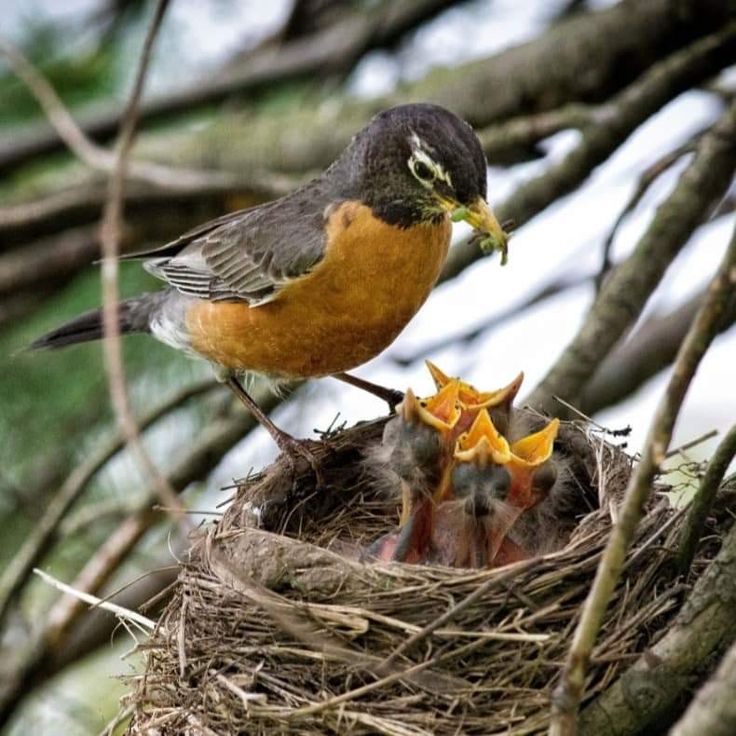 Each stage carries with it additional requirements with regards to dependency, food, behavior, etc.
Each stage carries with it additional requirements with regards to dependency, food, behavior, etc.
Robins do not mate for life; the pairs stick together throughout the breeding season then depart. The breeding season comprises of 2 – 3 nesting. The same two birds might probably mate again and stay together in the next year’s breeding period.
Watch this video to visually see how a baby robin transitions into an adult:
The Egg
These birds begin courting in late winters or early spring. Robin’s produces 5 – 6 clutches with one egg each day. The eggs take about 12 – 14 days to hatch, and tiny baby robins are born.
Robins lay blue eggs. The eggshell of the bird’s egg is of a cyan shade with a matte finish. The egg length is usually about 2.7— 3 cm, and it is 2.1 cm wide.
FUN FACT
Robins have up to three broods in a year, many of their babies do not survive.
1 to 7 Days
For the first few days, the babies can only open their beaks and not their eyes. They are delicate little bird babies with pink skin and light grey feathers patched on their bodies.
At this time, the baby robins are entirely dependent on their parents. The parents look for food and bring it back to the nest to feed their young. These babies survive on the partly digested food received from their parents directly in their mouths. This is the only way the babies can be fed during the initial days.
The food they eat includes partially digested worms, beetles, seeds, berries, and small insects.
INTERESTING FACT
Robins roost together in trees. Up to 200,000 robins can roost together at once.
7 to 14 Days
Once the hatchlings have transitioned into nestlings, they grow bigger, start developing feathers, and can open their eyes.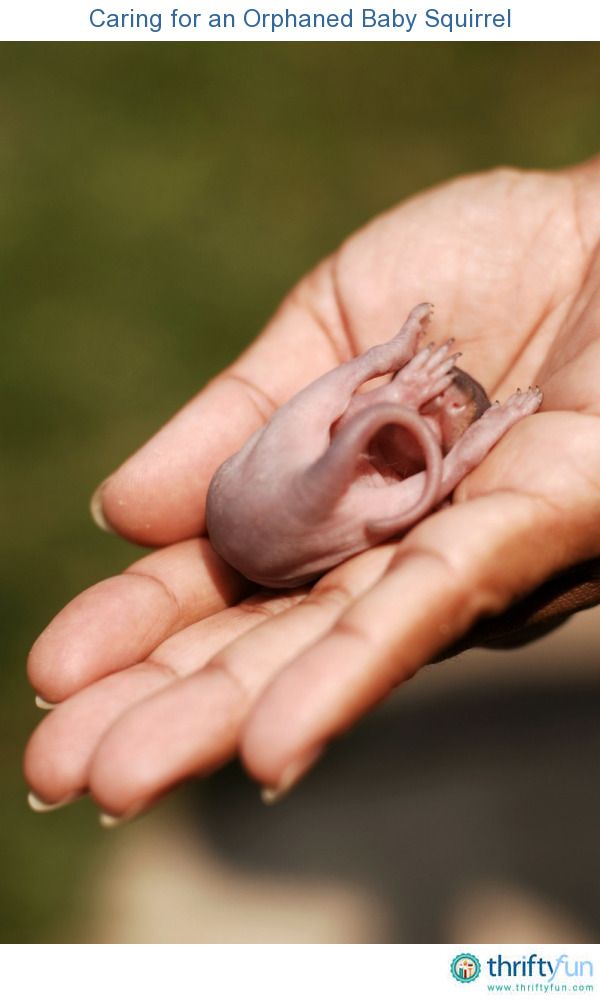 They express their food needs through loud chirping; the mother robin feeds them food and cleans the nest.
They express their food needs through loud chirping; the mother robin feeds them food and cleans the nest.
During this phase, the parent bird starts feeding them large portions of food through their mouth. The young birds consume more and more with each passing day. This is the baby’s growing period which is why their demand for food has increased.
They eat the whole version of beetles, worms, seeds, insects, and berries. Soon the parents let the baby robins eat the entire insect or fruit on their own.
FUN FACT
As soon as a baby robin grows 14 days old, it can consume food equal to 14 feet of earthworms.
14 Days and Over
At this stage, the birds are getting bigger, fuller, and gaining strength. Parents now place the food in the nest, and the baby robins find it and feed on it themselves. However, the young birds do depend on their parents until they can fly off the nest.
Only when they enter the fledgling phase, they become independent.
INTERESTING FACT
The parent robin has to make approx. 100 visits per day to feed their babies. This is because baby robins require a lot of feed to grow and develop. This is also why robins are careful when they pick a territory – they ensure that the place they live in has easy access to ample food sources.
What Can You Feed a Baby Robin?
Every bird has its preference; let’s explore what baby robins prefer to eat.
Robins are omnivorous birds and need a balanced diet to survive. Therefore, the best thing to feed a baby robin would be insects such as crickets, beetles, or grasshoppers, earthworms, mealworms, fruits, and berries.
The main aim of a balanced, nutrient-rich diet for a robin is to help it grow into a healthy adult. On average, a baby robin has to be fed after every 5 to 10 minutes. Further, we will mention a list of food you can feed the babies with.
INTERESTING FACT
Jays and crows are a threat to baby robins.![]() This is because they tend to eat these baby birds in the absence of their parents.
This is because they tend to eat these baby birds in the absence of their parents.
Earthworms
Baby robins love to indulge in earthworms or mealworms. They are fed worms by their parents as it proves to be a nutritious snack for the birds. However, feeding robins can be challenging, and the mother needs to be on her wings to find food for her babies.
If the baby bird is left alone for even a week, it will start looking weak or sick and may even die.
Insects
Insects are the best food option for baby robins. Adult robins feed mainly on beetles and grasshoppers. Nestlings are given partly digested beetles and grasshoppers from their parents.
If you plan on feeding a baby robin an insect on your own, then make sure it is old enough to eat by itself.
PRO-TIP
The best time to feed insects to baby robins is during the spring season. The baby is old enough to eat food independently and can easily digest insects like crickets and beetles by this time.
Fruits and Berries
Fruits and berries are also something that baby robins enjoy. They can eat fruits like grapes, blueberries, blackberries, and strawberries.
Make sure that the fruits are cut up into tiny pieces before being fed to the young birds. If the baby robin is strong enough, you can place these fruits on the ground and wait for them to feed on it.
INTERESTING FACT
Baby robins stay in the nest for a maximum of 16 days before practicing their first flight. After that, the mother robins protect their babies till the time they learn how to fly smoothly without any falls.
Do Baby Robins Need Liquids to Survive?
Food is a need, but is water also required for baby robins to survive?
Water is not essential for a baby robin. This is because the food they eat is moist, and it keeps them hydrated throughout the day. If the fledgling is not eating correctly, it is advisable to only put a drop of water on the bird’s beak.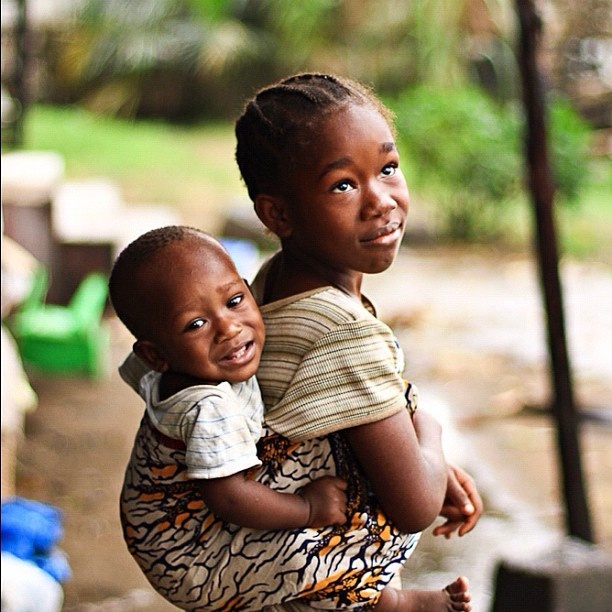
If you plan to provide water to these young birds, then make sure that the water is lukewarm and fresh. They do not have a high-water requirement but when needed, try to be very careful, feed tiny drops of water at a time.
Once the baby robin grows, it will be able to drink water independently through shallow dishes. Although the food provided by parent robins is enough to keep the baby hydrated, if you find an orphaned baby robin that does not eat right, make sure you use a dropper or syringe to put a few drops of water in its mouth timely.
Moreover, birds, unlike mammals, do not consume milk. The digestive systems of baby robins are not strong enough to tolerate milk. It is a misconception that it is alright to provide milk with bread to birds. However, milk can be highly toxic.
PRO-TIP
Never force water directly in the baby bird’s mouth; it may lead to the young bird choking and dying.
What Should Not Be Fed to Robins?
Specific food sources should be avoided entirely while feeding a robin.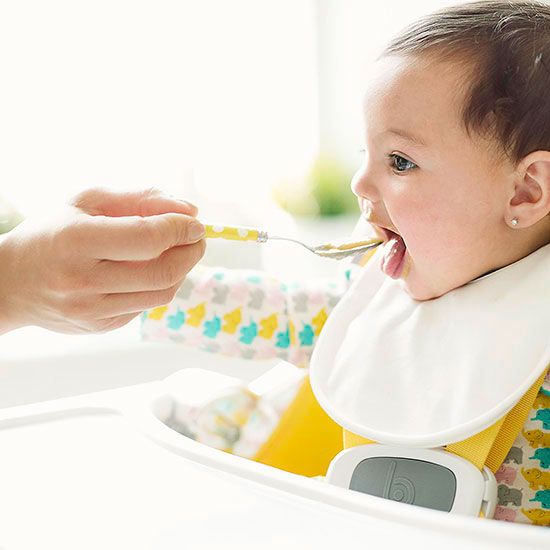 Let’s find out what they are!
Let’s find out what they are!
Robins can not eat anything large as they are little songbirds with a small beak. It is best not to feed these birds bread, avocadoes, asparagus, and many fruits and vegetables. Milk or alcohol should also be avoided as it may harm the bird’s internal system.
Try not to put out bird mixes for robins in your backyard. Most bird mix is viable for larger bird species to consume as they consist of beans, rice, dried peas, lentils, and wheat that a small robin might not be able to digest.
Ideally, bread should not be given to robins as it does not have the proper nutrients to keep the bird safe and warm during the winters. However, bread can be given at rare instances but only as a snack.
Please do not leave out milk for robins; they might not be able to digest it. However, fermented dairy products such as soft cheese can be given in tiny amounts.
Other items that should be avoided for a robin are:
- Vegetables: eggplant, asparagus, onions, olives, parsley, spinach, and mushrooms.
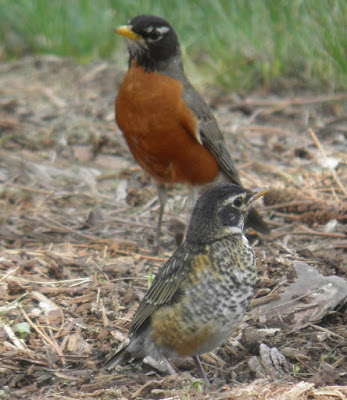 These might be healthy for humans but are not something you can give to robins.
These might be healthy for humans but are not something you can give to robins. - Nuts and Seeds: pear seeds, apricot pits, apple seeds, cherry pits, plum pits, peach pits, and raw peanuts should all be avoided.
- Beans: dried beans consist of hemagglutinin that is dangerous for birds. However, cooked beans are perfectly fine to give.
- Fruits: rhubarb and avocados are not safe for birds like robins.
- Sugary food: chocolates are not advisable to feed a bird.
- Liquids: alcohol, coffee, tea, carbonated drinks, and milk.
The food items listed above should be kept away from the birds. These can make the birds fall sick or be fatal to the little birds.
PRO-TIP
To distinguish between a male and a female robin, examine the color of their heads. A male robin has a darker shaded head, while a female robin has a pale brownish-gray color.
How To Attract a Robin?
Tips and tricks to attract a robin to your yard!
Attracting a robin to your yard is very simple and easy.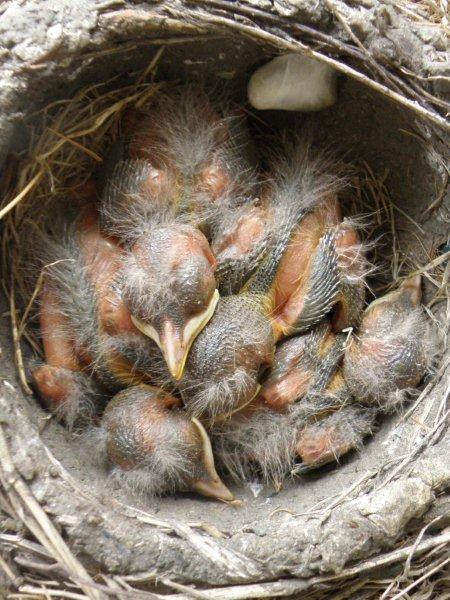 Just keep an ample amount of food supply in your yard, grow trees and bushes to provide an ideal nesting site for the bird, and make sure your yard is safe and secure for the birds.
Just keep an ample amount of food supply in your yard, grow trees and bushes to provide an ideal nesting site for the bird, and make sure your yard is safe and secure for the birds.
Feed Them
Robins like to consume invertebrates and insects in the summer and fruits and seeds in the winters. Make your yard similar to the wild habitat that they live in. Plant trees in your garden to encourage invertebrates in your garden. This way, you can provide food naturally to these birds.
Provide Nesting Opportunities
Birds like robins are always looking for a safe space to stay in. Their main aim is to find a hidden spot to nest, away from the predators.
The ideal nesting spots for a robin are dense vegetation, climbing plants, and hedges. Moreover, you can hang up nest boxes for these little creatures. They prefer small nest boxes with an open front and under natural covers.
Safety From Predators
Robins are likely to settle in your yard if they feel safe from large predators such as dogs or cats. The bird feeders should be near dense vegetations to hide easily if they sense danger.
The bird feeders should be near dense vegetations to hide easily if they sense danger.
The nest boxes should not be directly in contact with the sun and wild winds. Clean the feeders and nest boxes regularly to avoid bacteria formation that could harm the birds.
How To Take Care of a Baby Robin?
Steps to take care of the adorable little robin babies.
If you see a baby robin stranded on the ground, you should take action to care for it. If the bird is injured and its parents are nowhere to be seen, it is advisable to keep it warm, feed it, and wait for it to get better before you set it free.
PRO-TIP
Baby robins require extra heat at night. If you do not have a brooder, you can keep a heating pad under the box to provide warmth.
Watch The Baby
If you come across a baby robin on the ground, it is possible that the fledgling was learning how to fly but fell over. Stay at a safe distance and keep a watch over the baby bird to see if its parents fly by to take it. If the parents do not return in approximately 30 minutes, go near the bird and check for any signs of injury.
If the parents do not return in approximately 30 minutes, go near the bird and check for any signs of injury.
INTERESTING FACT
When the baby bird falls, it will likely chirp loudly to call its parents. This is why you should wait for a good time before acting; the parents might return to the nest and look for their baby nearby.
Place The Baby in a Warm Place
If you are sure that the parents of the baby robin are not to return, place the baby in a box covered with a soft, warm towel. Don’t forget to punch holes for the air to pass.
Cover the lid as the babies feel safe and calm in darkness; they may stop fluttering around in the covered box.
Make sure that the baby bird is warm and cozy. Remember that you should not keep the box directly under the sun or in front of a heater; it can lead to dehydration or overheating.
PRO-TIP
Place a hot water bottle under the towel that is placed in the box. This will help keep the baby robin warm.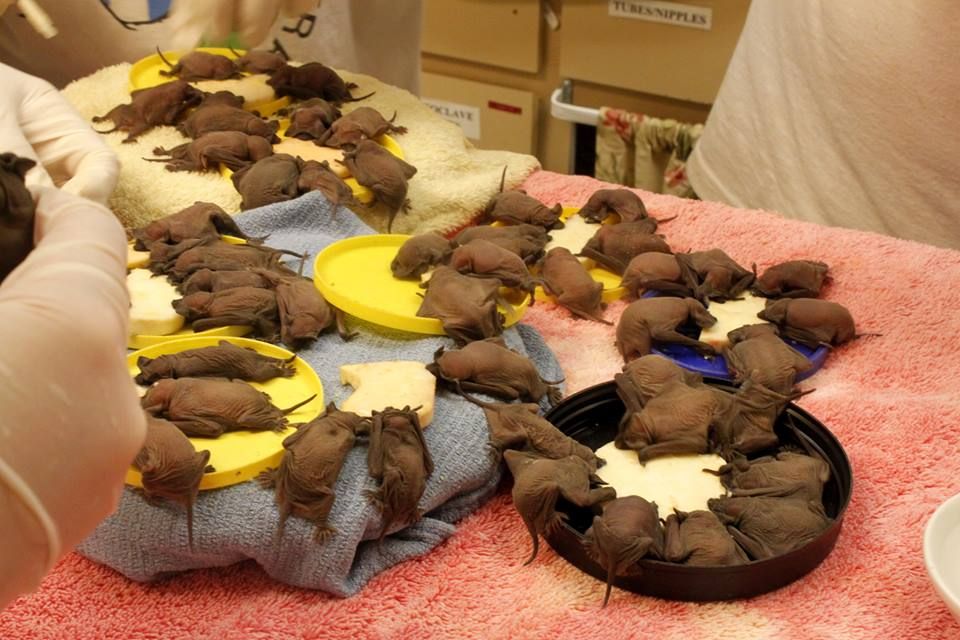
Feed The Baby
Feed the baby bird after every hour if it is a fledgling. If the baby robin is featherless, then feed it after every 30 minutes. Food that can be fed are:
- Worms
- Canned dog food
- Canned cat food
Be sure to mash the worms before feeding them to the birds. Young babies cannot digest whole worms properly. However, you can use tweezers or toothpicks to put the food directly into the baby’s mouth.
Follow each bite with a drop of water. You can place the water drops on your fingertips and put them close to the bird’s beak. Baby birds do not need a lot of water; their food is enough to keep them hydrated.
WARNING!
Do not hold the bird while feeding it, and do not pour the water directly into the baby bird’s mouth; it can fill its lungs with fluid and cause pneumonia.
Keep Reading!
Baby robins are adorable little creatures that you can easily attract to your yard. The parents are in charge of keeping the babies safe and secure. However, if you spot a baby robin on the ground without any sight of its parents, it is your responsibility to take care of it.
However, if you spot a baby robin on the ground without any sight of its parents, it is your responsibility to take care of it.
This post will help you identify food sources given to a baby robin and those that should be avoided. In addition, tips on how to take care of an orphan baby bird are also mentioned to guide you through a similar situation.
If you want to know more about baby birds, such as the baby bluebird, you can read up on this post .
What Do Baby Bluebirds Eat? How to Take Care of Baby Bluebirds
Bluebirds are exotic little creatures that require care and attention. To know exciting facts about baby bluebirds, read below.
By David A. Swanson
Bird Watching USA
My name is David and I'm the the founder of Bird Watching USA! I started Bird Watching with My father-in-law many years ago, and I've become an addict to watching these beautiful creatures. I've learnt so much over about bird watching over the years that I want to share with the world everything I know about them!
Posted in:
Malinovka - Notes of a Naturalist | Non-commercial educational and cognitive Internet portal Zoogalaxy
The Animal Friend book series, 1909
6012 A close relative of the nightingale, the robin, a very pretty and lovely bird, a small, graceful bird with a pretty head, large beautiful eyes and a thin beak; her back is greenish-gray, her abdomen is gray, and her throat, forehead and breast are yellowish-red; the legs of the robin are thin, slender, high; the tail is long and very mobile. And what a lively, dexterous and cheerful she is! Every now and then she jumps with a cheerful chirping from branch to branch, deftly making her way through the densest bushes, so she jumped to the ground and fluttered along it quickly, quickly ... flutter! - and has already gone upstairs. The robin flies very well, quickly, tirelessly.
And what a lively, dexterous and cheerful she is! Every now and then she jumps with a cheerful chirping from branch to branch, deftly making her way through the densest bushes, so she jumped to the ground and fluttered along it quickly, quickly ... flutter! - and has already gone upstairs. The robin flies very well, quickly, tirelessly.
Robin - a very common bird; it is found in almost every forest where bushes grow under large trees; she lives on the mountains, and in the plains, and in the fields, and in the gardens, and often settles in the vicinity of human habitation. The robin is found, except for the extreme north, throughout Europe - in the summer in the north, and in the winter it flies to the south.
She flies to us in early spring, when our alder earrings are just beginning to bloom, but at first the poor thing often has a hard time: it’s cold, and, most importantly, hungry. The robin, like the nightingale, is an insectivorous bird, so it is difficult for her to provide food for herself at first; all day long, in great trouble, she darts through the surrounding forests, gardens and bushes in pursuit of food, and chirps loudly.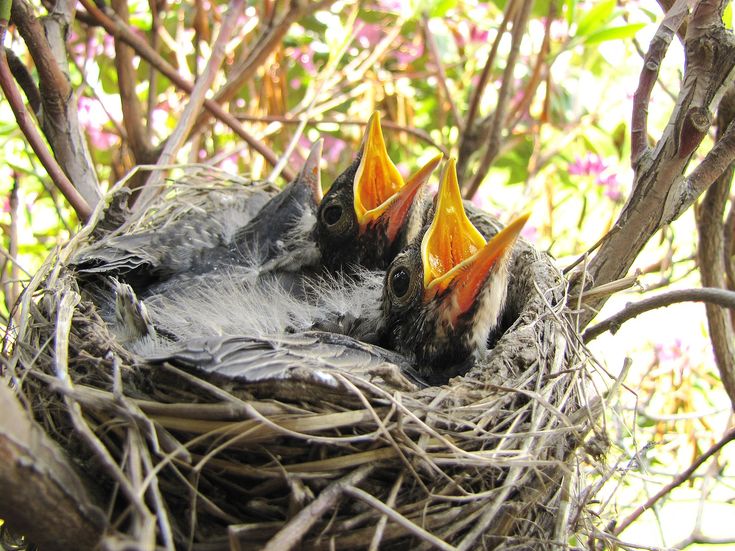
But here comes the real spring. The air gets warmer, many insects appear, and the robin starts its real song. If you go in the direction of this song, you can see the singer himself: at the end of one of the high branches of a large tree, a small, pretty, red-breasted bird sits and, proudly raising its head, lowering its wings and inflating its stomach, sings - pours a silver song. And her song is good - you will hear it! Thus sings the robin from dawn until nightfall all spring; in the summer, her marvelous songs are silent, but in the morning she is the first to greet the morning dawn with a song, the last to see off the sun at sunset, which is why the robin is also called the “robin”.
Each pair of robins has its own area in the forest, where they arrange their nest; they arrange it on the ground, in a hole, in thick grass, in moss, or even in an empty mink of some animal, or not high above the ground, on a rotten stump, between the roots of a tree. If the hole in which the robins decide to build their nest is too large, then they fill it with dry leaves, and the walls of the nest are woven from moss, dry twigs and leaves.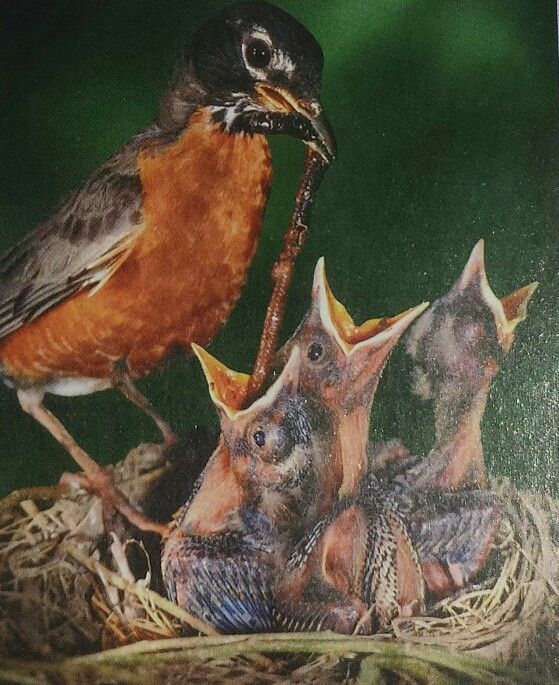 Inside, they softly line it with thin roots, straw, hair, wool and feathers. If the hole in which the nest is built is too open, the birds arrange a canopy over the nest so that the rain does not wet it, and the inlet is made on the side.
Inside, they softly line it with thin roots, straw, hair, wool and feathers. If the hole in which the nest is built is too open, the birds arrange a canopy over the nest so that the rain does not wet it, and the inlet is made on the side.
At the end of April or at the beginning of May, 5-7 motley eggs can be seen in such a nest. Mother and father sit on them alternately: the mother sits during the day, and the father at night. When the chicks hatch from the eggs, the mother and father feed them so diligently that the chicks grow and get stronger very quickly. And after the chicks fly out of the nest, the mother and father for 8 days, or even more, still fly with them and feed them until they learn how to fly well and get their own food. And there the children will scatter in different directions, and the old people again begin to bring out the second chicks.
In July or early August, when the second brood of chicks has fledged and scattered, the old robins molt and, when they molt, begin to prepare for departure.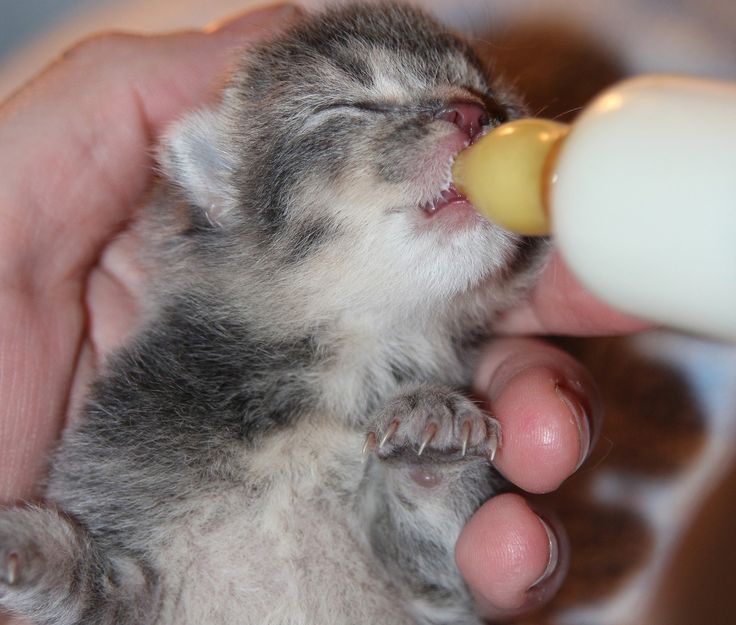 If, during their departure, you come close to the place of their gathering in the forest, then from every tree, from every bush their voices are heard. At first they are heard close, close to the ground, then higher and higher, and finally their voices are heard from the tops of the trees, then everything is silent ... And when the sun sets, their chirping is already heard high, high above the forest: they are flying to the winter hut.
If, during their departure, you come close to the place of their gathering in the forest, then from every tree, from every bush their voices are heard. At first they are heard close, close to the ground, then higher and higher, and finally their voices are heard from the tops of the trees, then everything is silent ... And when the sun sets, their chirping is already heard high, high above the forest: they are flying to the winter hut.
Most of the robins do not fly far from us for the winter, they fly only from the north to southern Europe, and when their cheerful, ringing songs subside and the forest is empty, the places where these birds spend the winter will come to life. Where in the summer you would look in vain for a robin, they suddenly appear on every bush, on every hedge and tree, and chirp loudly in front of each other.
In some places where the winter is not so severe, many robins do not fly away for the winter at all, but, having got closer to human habitation, they feed here, near the person, paying him for dinner with ringing chirps.
The robin's disposition is lively, cheerful, but also provocative, she often teases other birds, starts quarrels with them, even fights, but she has a kind heart - she pities her sick comrades, helps them.
Two robins lived in the same cage and constantly did not get along with each other, argued over every grain, fought. But one of the robins broke her leg and became very ill. Immediately, the healthy woman began to take care of the sick, she brought her food, rejoiced when she pecked him and in every possible way showed how sorry she was for the sick comrade. And when the sick robin recovered, there was no mention of the previous quarrels, and both robins began to live together in harmony.
And then another person had a robin in the house; she was very tame; her cage was never locked, and she flew freely through all the rooms. Once the owner of a robin found a little linnet chick and brought it home. A hungry chick squeaks loudly, asks for food, opens its mouth wide. The robin saw this, got excited, flew to the table, took a mouth full of bread crumbs and began to feed them to the chick. Since then, the robin began to take care of the chick, and so she fed him.
The robin saw this, got excited, flew to the table, took a mouth full of bread crumbs and began to feed them to the chick. Since then, the robin began to take care of the chick, and so she fed him.
They say that even in the wild, robins often feed other people's orphaned chicks and even chicks of other birds.
← Nightingale↑ Notes of a NaturalistChizh →
Novosibirsk news today: | Gazette of the Legislative Assembly of the NSO
Photo report
03.11.22
Back in the USSR
About a dozen nationalities presented their traditions and customs at the festival “We are all one family” in Iskitim
More
Society
03.11.22
Unleash your emotions!
Why do we need emotional intelligence and how can we learn to recognize our own and others' emotions?
Read more
Economics
03.11.22
Wine of success
The situation on the alcohol market, the positions occupied by Russian wines, and the experience of the first wine fairs were discussed at the Days of Retail in Siberia forum
Read more
5 Culture
03.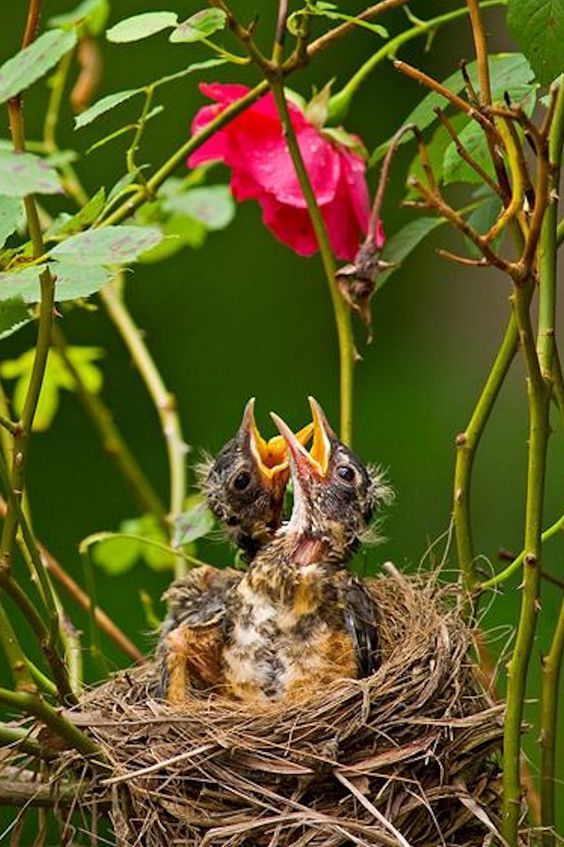 11.22
11.22
In reality, not in a dream
Zurab Tsereteli's exhibition at the Art Museum, Nacho Duato's The Nutcracker at NOVAT, special screening of the film Manly at Pobeda. Plan a cultural trip from 4 to 11 November
Read more
Travel
03.11.22
Gate to the south
GOING TO NSO. Chuysky tract, silver horse, black birch and an art gallery — today we are talking about Cherepanovsky district
Read more
Society
03.11.22
Dissolving stones
How does the Silver Key mineral water work? The candidate of medical sciences, doctor of the highest qualification category, director of the sanatorium "Dawns over Biya" Evgeny Lebedev
Read more Siberian agro-industrial complex
Read more
Economy
02.11.22
A chance for new starts
What should regional brands become and how to establish cooperation in the new conditions?
more
Economy
02. 11.22
11.22
Strategy for the development of
In 2022 in the Novosibirsk Region more than two million square meters of housing
Education and science
02.11.22 9000
gesture and digit gesture and digit
NSTU has developed a unique device for translating speech into sign language
Read more
Culture
01.11.22
Where does the Motherland begin?
"Krapivinsky Boys", patriotism and a big fairy tale - in what direction is the children's theater developing in Novosibirsk?
Read more
Economics
01.11.22
Code of discord
Problems of non-stationary shopping facilities and ways to solve them - a very topical topic for Novosibirsk
Read more
Economy 5
08 11.11.22
showed the nature of
The state of markets, import substitution, consumer trends - these topics were discussed on the forum "Days of retail in Siberia"
Read
Education and science
31. 10.22
10.22
Melody for school
V. Novosibirsk region is modernizing children's art schools.
More details
Education and science
10/31/22
Safety algorithm
Metal detector frames, "panic" buttons, student training - how is safety ensured in schools in the Novosibirsk region?
Read more
Sport
31.10.22
Victory classic
The traditional Greco-Roman struggle "Strength of Traditions" was held in Novosibirsk
more Legislative Assembly NSO adopted an appeal to the Minister of Agriculture of the Russian Federation regarding the stabilization of the situation on the grain market
More
All
Novosibirsk and NSO
Russia
World
Novosibirsk called a comfortable mode of transport.
According to a study by the Siberian Politics Foundation, 58% of Novosibirsk residents consider the metro to be the most convenient form of public transport.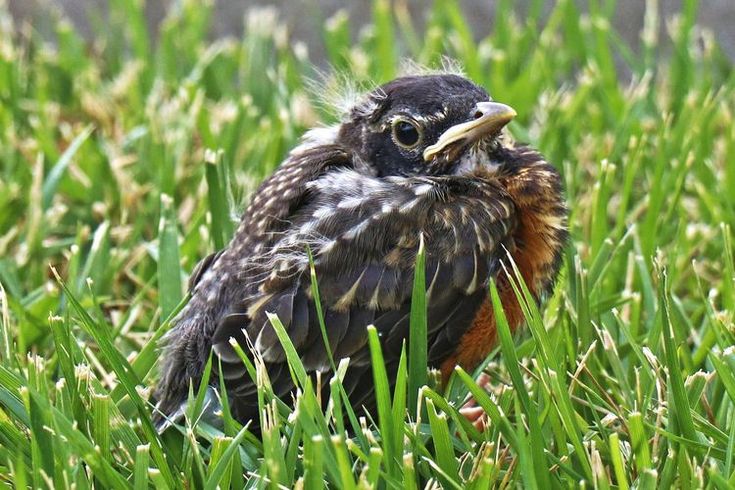
A new kindergarten has opened in the city.
A new kindergarten was opened on Gogol Street - for 100 children, including children from one and a half to three years old.
A ten-year-old schoolgirl starred in a movie about child heroes
Novosibirsk schoolgirl Polina Kuzina, who saved a drowning boy on the Ob Sea, starred in the documentary No Time for Heroism.
Acting Governor Andrei Travnikov will receive a bath broom.
The Novosibirsk region has entered the top of the cleanest regions - according to the rating of the General Cleaning project, which was conducted by the ONF. By tradition, the governor of a clean region receives a symbolic bath broom as a gift.
NSU joined the Association of Francophonie Universities.
The University has become an official member of one of the largest international associations that unites universities, higher schools, research and educational centers.
Historical Park "Russia - My History" will be free.
From January 1, 2018, the entrance to the halls of the multimedia park, opened in November this year in the renovated garrison House of Officers, will be free for everyone.
A unified cultural portal is being developed in the Novosibirsk Region.
The Ministry of Culture is developing an Internet portal that would combine information about all cultural events taking place in Novosibirsk and the region.
ratings
21.10.22
TOP-7 films October
Pay attention to the main premieres of October-2022: films from Russia, USA, Ireland and Sweden
more
ratings
09/28/22 9000 12 reasons to fall in love with Kazan
This city amazes, delights and enchants. It is not for nothing that Kazan is called the “third capital” of Russia — it looks a bit like Moscow and St. Petersburg, but, of course, it is unique in its own way
Read more
Ratings
27.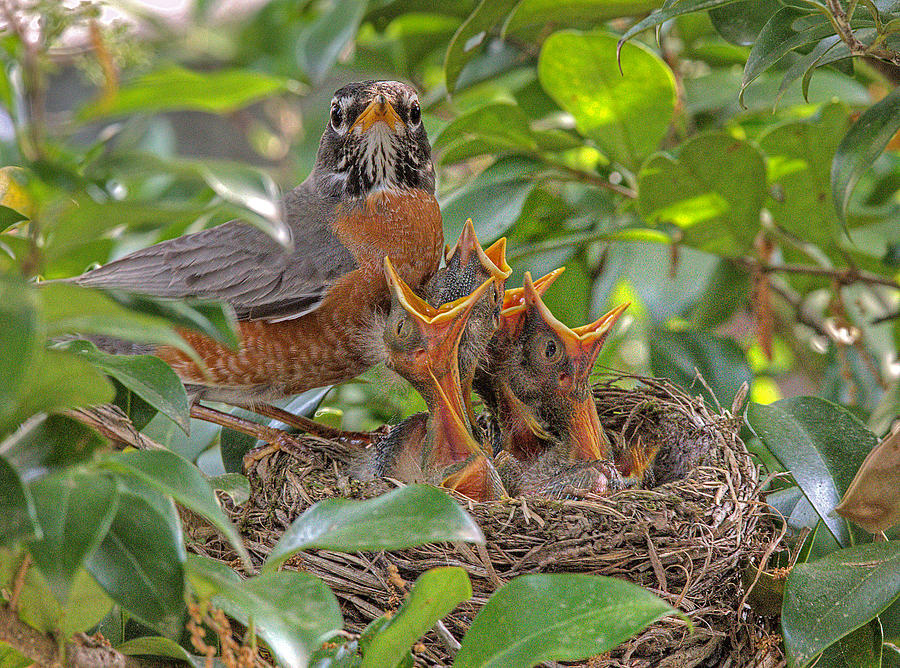 09.22
09.22
TOP-6 pumpkin dishes
we have collected for you
More details
Ratings
05.09.22
TOP-6 films and series of September
The return of the Lord of the Rings, Pinocchio, cars and other cult characters: we talk about the main premieres of September 2022
Read more
Elena Kvasnikova
chief editor
And let me tell you what to do if you, having been vaccinated against COVID-19, did not find a certificate with a QR code in your personal account at public services. This is exactly what happened to me
Evgenia Antsupova
chief editor
If you look at the two pandemic years from the position of “seeing the good in the bad”, then when else, for example, would I travel around Russia?
Natalia Dmitrieva
journalist
Watching the trends, I come to a sad conclusion - the "new ethics" is becoming another religious cult and its neophytes are ready to defend their truth with "fire and sword" according to the principle "who is not with us is against us"
Vitaly Solovov
journalist
Do you love "a strong hand" and "effective management", but you see them in different historical eras? Choose any of the following two options - 1909 and the same 1937.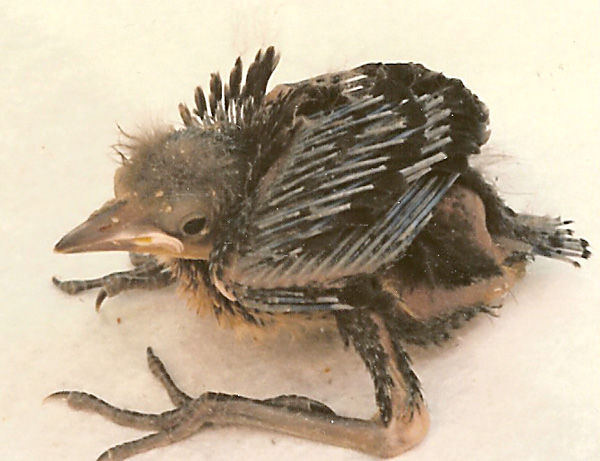 Just look, do not fight - and do not try to write denunciations against each other
Just look, do not fight - and do not try to write denunciations against each other
Marina Shabanova
journalist
When I stopped sleeping at night, realizing that someone was sleeping in basements, had no water and food, was dying under shelling, I decided to sign up for volunteers
In the Legislative Assembly
02.11.22
Critical, but not fatal
Deputy of the Legislative Assembly Alexander Teplyakov shared his opinion on the situation in the Siberian agro-industrial complex
31.10.22
mechanisms a lot of
Session of the Legislative Assembly of the NSO adopted the Minister of Agriculture of the Russian Federation regarding the stabilization of the situation on the grain market
28.10.22
Keep the
,deputy of the Legislative Assembly of NSO Nikita Galitarov - about the fate of the Matveevsky relocation and ambulance substations and other problems of the Pervomaisky District
Politics
09/16/22
The State Duma hears us
What to do with consumer terrorism and escrow accounts, do cities need airport zones - what else worries developers in the Siberian region?
09/13/22
Level of confidence
Results of the elections held on the voting days from September 9 to 11 were summed up in the region
01/13/22
Kazakhstan crossroads 2022 changed in Central Asia?
Economics
03.:max_bytes(150000):strip_icc()/robin-feeding-babies-5a1d6f59beba33003700d88b.jpg) 11.22
11.22
Wine of success
The situation on the alcohol market, the positions that Russian wines occupy on it, and the experience of the first wine fairs were discussed at the Days of Retail in Siberia forum
02.11.22
A chance for new starts
What should regional brands become and how to establish cooperation in the new conditions?
02.11.22
Strategy for development
In 2022, more than two million square meters of housing will be built in the Novosibirsk region
Society
03.11.22
Unleash your emotions!
Why do we need emotional intelligence and how can we learn to recognize our own and others' emotions?
03.11.22
Dissolving stones
How does the Silver Key mineral water work? Evgeniy Lebedev, candidate of medical sciences, doctor of the highest qualification category, director of the sanatorium "Dawns over Biya"
10/28/22
Working with a spark
In the Novosibirsk region, the area of forest fires has been decreasing for several years in a row
Culture
03.